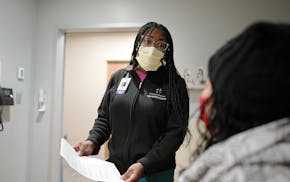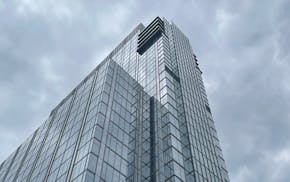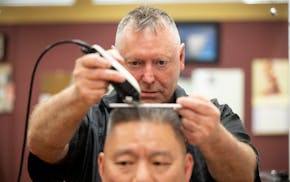The Minnesota State Fair, that bacchanal of excessive consumption of local foods, products, rides and much more, will generate around 860 tons of waste to be burned or buried through Labor Day.
Fortunately, the fair's management and dozens of vendors increasingly are providing opportunities to recycle, compost and reuse. And the rate of consumer participation is rising at double the growth of garbage.
The fair is an opportunity for up to 2 million visitors over a couple weeks to do more than consume. We can learn easy-to-do environmental practices that can be good for the wallet, health and economy. This movement, including conservation-related products and low-carbon energy, is growing faster than the overall economy. It spans wind energy that powers millions of homes and businesses and added 15,000 U.S. jobs last year, a 15 percent-plus job hike, to consumer electronics refurbishes and fertilizers made from leftover food and animal waste.
Make America Green Again. And see some of it at the fair.
For example, TechDump will hit a record $3.5 million in sales this year, thanks to 55 employees who will collect 4 million pounds of consumer electronics that they refurbish for resale or recycling. The Golden Valley-based outfit will cap its "Cell Phone Summer" drive to collect one ton of old mobile phones by Labor Day at the State Fair's growing Eco Experience.
"We encourage everyone to tell their out-of-town relatives and friends," said TechDump CEO Amanda LaGrange, a one-time General Mills accountant turned eco-entrepreneur. "There are fewer recycling options outstate. This is a way for fairgoers to make a difference, one phone at a time.
"We guarantee proper data destruction. No illegal dumping or export to developing countries to dump. We refurbish phones, tablets and laptops and sell them at significant discounts through our Tech Discounts retail stores. We responsibly recycle the cords, cables and the rest."
The Eco Experience has grown to be a huge exhibit at the State Fair. It demonstrates products and methods for protecting and conserving clean water as well as the growing portfolio of Made-in-Minnesota products made from recycled feedstock that takes less energy and virgin materials.
Last year, fair management recycled or composted 340 tons of stuff, not including 1,744 tons of manure and bedding that was used for fertilizer or composted. That's 155 tons of cardboard; 46 tons of glass, plastic and aluminum; 70 tons of cooking oil; and 68 tons of composted food waste.
The amount recycled or composted last year increased 15 percent compared to a 6.5 percent increase in garbage, to 860 tons.
"Education is at the very core of our mission so … we incorporate recycling into our operation and raise public awareness about the ways a large-scale event can make a difference and … reduce our contribution to the waste stream," said Chris Leach, operations director for the fair.
"With funding from the American Beverage Association, the State Fair increased recycling containers by nearly 50 percent [in 2016] and added new, standardized recycling labeling from Recycle Across America to make recycling [easier] to understand for our guests. … Signs resulted in an estimated increased collection of nearly 400,000 bottles and plastic cups over the course of the fair, increasing plastic and glass recycling by 22 percent."
Much of that recycled content becomes feedstock for a new generation of containers, lawn furniture, airplanes, paper and much more.
In 2016, the Minnesota Pollution Control Agency reported to the Legislature that state businesses that make products from recycled content, including used-product retailers, employ 60,215 who earn about $3.4 billion in combined pay and generate $26 billion in revenue.

St. Anthony: 'Patient' investing paying off for St. Paul's Hill Capital

Jennifer Smith, leader of Burnsville's Innovative Office Solutions, has died

St. Anthony: Medical professions in Minnesota need more people of color in their ranks



![Wayne Gjerde spoke about the dock pilings made of recycled materials which on display in the Eco-Experience building at the Minnesota State Fair. ] CA](https://arc.stimg.co/startribunemedia/3ZFXWQF2S5GDCQAQP2MJBDSQGM.jpg?w=600&h=600&auto=format%2Ccompress&cs=tinysrgb)